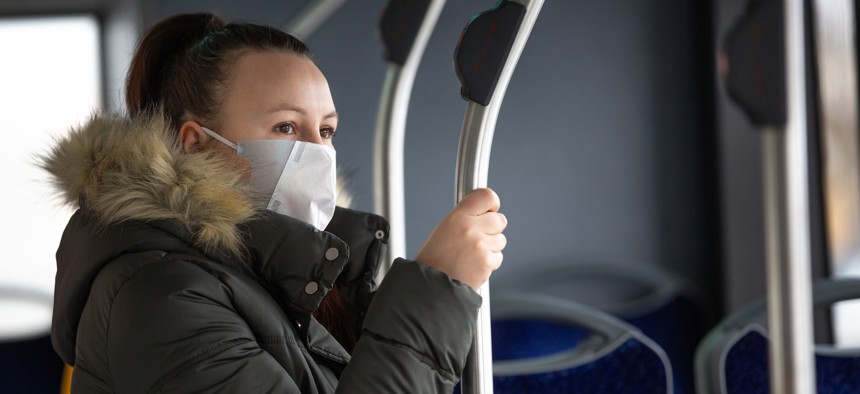
Simon Kadula/Shutterstock.com
When Americans Go Back to Work, Things Won’t Be the Same
Americans will have to change how they do business to cope with the COVID-19 pandemic and its aftermath. Here's what it could look like.
When the United States returns to work, things won’t be the same as they were, Jonathan Caulkins argues.
“I think it’s unrealistic to think that we will be able to re-open as we were before. In fact, I don’t want us to,” says Caulkins, professor of operations research and public policy at Carnegie Mellon University. “But society can, and should, make changes now to ease the transition and help the economy.”
In his opinion, the best way to boost the economy by getting some people back to work soon is to focus on manufacturing and construction.
In a recent op-ed he wrote for Politico, Caulkins notes that 20 million Americans work in those fields, which is more than those in leisure and hospitality. Many restaurants are open these days for take-out. Manufacturing plants, unless they produce health supplies, are mostly shuttered.
“Yet if you walked through both a typical restaurant kitchen and a manufacturing floor, you would see that many kitchen workers are forced to work much more closely to each other than on a factory floor,” Caulkins says.
“Modern manufacturing plants are very capital-intensive enterprises with a lower population density. And a typical factory is used to putting a premium on controlled work processes that are safety-driven. Many could open now.”
For the record, Caulkins thinks restaurants should stay open, too. But, with more creativity and flexibility from governments, he sees a pathway for millions of additional workers to soon join cooks and cashiers back at work with even greater safety than we have today. Even furniture and electronics stores are potential candidates.
“Target can stay open and sell TVs and lamps because they also sell groceries. But other big-box businesses, with equally large buildings that don’t sell food, can’t open their doors,” Caulkins says. “Perhaps we limit the number of customers at a time. Or allow sales people to use video technology to show items remotely and take orders on the phone.”
Caulkins sees three categories of businesses in this COVID era: those that are essential and must remain open, such as hospitals; less-essential businesses that should stay closed for now because they introduce more risk than value, such as concert venues and theme parks; and those in the middle that should be given leeway for getting their employees back to work.
“Some could open now, predicated on a plan the business develops that implements safe social distancing protocols. Government officials would visit and inspect the business in the days and weeks to come,” he says.
“Other businesses would have to first submit their plans for review before being approved to re-open. The people who know best about how to make their workplaces safe are those who work in them.
“Our country’s current mindset is very binary: companies are either life-sustaining or not,” Caulkins adds. “They can stay open or they must close. We can’t economically survive with that rigid outlook indefinitely in place until life eventually returns to whatever ‘normal’ awaits us.”
Caulkins has several ideas that could bring more Americans back to work, in addition to new ways to create revenue for businesses that aren’t currently open:
Keep Stores Open Longer
“I see many stores shortening their hours in an attempt to minimize social contact. But it also forces the same number of customers into a smaller window of time. Keep the stores open later, even 24 hours, to disperse the crowds. It would also provide more shifts for employees,” Caulkins says.
Make Gas Stations Full-Service
“Gas stations should remain open, but self-service involves scores of people touching the same pump handle every day. With so many people needing work, why not require gas to be pumped by gloved attendants with payments made online?”
Changes for Retail
“Limit the number of customers in the stores, or allow sales persons to use video technology to show items remotely and take orders on the phone. Pick-ups could be curbside or inside the store using social distancing guidelines.”
Open Gold Courses
“It’s odd to me that golf courses are closed. When you’re playing, you’re more socially distant than walking down the sidewalk. But if a golf course can’t open, cities could rent the property for the next few months and turn it into a temporary park with walking trails. Parks are very busy these days, as people look for ways to get outside. Golf courses would increase available green spaces for the public.”
Create New Jobs
“We have hundreds of thousands of people who are scared and lonely while self-isolating. They could be depressed and out of work, or too sick to have visitors,” Caulkins says.
“Thousands of people could be hired by the government to simply call them to provide comfort, entertainment, and interaction in order to address psycho-social needs that aren’t currently being met.”
Source: Carnegie Mellon University
This article was originally published in Futurity. Edits have been made to this republication. It has been republished under the Attribution 4.0 International license.






